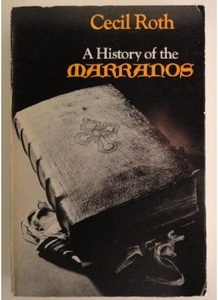NAMES ANALYSIS REPORT
You searched for:"Luis",
Here's what we found
There are many indicators that the name Luis may be of Jewish origin, emanating from the Jewish communities of Spain and Portugal.
When the Romans conquered the Jewish nation in 70 CE, much of the Jewish population was sent into exile throughout the Roman Empire. Many were sent to the Iberian Peninsula. The approximately 750,000 Jews living in Spain in the year 1492 were banished from the country by royal decree of Ferdinand and Isabella. The Jews of Portugal, were banished several years later. Reprieve from the banishment decrees was promised to those Jews who converted to Catholicism. Though some converted by choice, most of these New-Christian converts were called CONVERSOS or MARRANOS (a derogatory term for converts meaning pigs in Spanish), ANUSIM (meaning "coerced ones" in Hebrew) and CRYPTO-JEWS, as they secretly continued to practice the tenets of the Jewish faith.
Our research has found that the family name Luis is cited with respect to Jews & Crypto-Jews in at least 9 bibliographical, documentary, or electronic references:
The Inquisitors and the Jews in the New World, by Seymour B. Liebman. Reports the names of people who appeared before the inquisition in the New Spain
Except for a brief introduction, the entire book is a listing of Inquisition Records in the New World. This is a source for converso names in the New World.
The Inquisitors and the Jews in the New World, by Seymour B. Liebman. Reports the names of people who appeared before the inquisition in El Peru.
Except for a brief introduction, the entire book is a listing of Inquisition Records in the New World. This is a source for converso names in the New World.
A History of the Marranos, by Cecil Roth.
The expulsion of the Jews from Spain in 1492 by the infamous decree of King Ferdinand and Queen Isabella was the culmination of a series of anti-Jewish persecutions throughout the 14th and 15th centuries in which thousands of Jews were massacred. Thousands of others converted in order to escape death. After the expulsion many more joined the ranks of these "new Christians" as an alternative to exile. A large number of converts, while outwardly professing Christianity, secretly continued to practice Judaism. These Marranos, as they were popularly known, were then mercilessly persecuted by the dreaded Inquisition which through tortures of forced confessions and auto-da-fes sent thousands to the stake. Many others managed to escape to countries outside the reach of the Inquisition where they created a widespread Marrano diaspora. Thousands of Marranos have survived even into our times. This seminal work by the eminent historian traces the tribulation of these secret Judaizers as well as the fate of those who succeeded in escaping to other lands where many of them rose to prominence in various fields of endeavor.
Jews in Colonial Brazil, by Arnold Wiznitzer
Professor Wiznitzer gathered detailed information about individual Jewish settlers in colonial Brazil and about cases where they were brought before the Inquisition at Lisbon, and his study throws new light on some phases of Brazilian colonial history. Many Jews fled to Brazil and others were deported to the colony as convicted heretics after the King of Portugal attemtped to compel all of his Jewish subjects to accept Christianity in 1497.They were active in the establishment of the sugar industry and in trade, and they maintained close relations with another large group of exiles who had taken refuge in Amsterdam.Most of the "new Christians" continued to practice the old religion secretly.
The Jews of New Spain, by Seymour B. Liebman
Professor Liebman endeavors to discover why, beginning in 1521, Jews migrated from Old Spain to New Spain. He then proceeds to document the persistence of Jewish life in the face of a new Spanish Inquisition and formalized suppression including forced conversion and exclusion from citizenship. The author concludes it was the religious, cultural and personal vitality of Jews that caused their cherished and proud identity to persist, even though most of the earliest Jewish migrants eventually did assimilate into Mexican society.
Secrecy and Deceit: The Religion of the Crypto-Jews, by David Gitlitz
Despite the increased attention given to Hispano-Jewish topics, and the "conversos" or Crypto-Jews in particular, this is the first thorough compilation of their customs and practices. The author has culled from Inquisition documents and other sources to paint a portrait of the richness and diversity of Crypto-Jewish practices in Spain, Portugal, and the New World. The history of Spanish Jews, or Sephardim, stretches back to biblical times. The Jews of Spain and Portugal made formative contributions to all Hispanic cultures, the impact of which is first being measured and recognized today. The Sephardim experienced a Golden Age in Iberia between 900-1100, during which they acted as the intermediaries between the rival political and cultural worlds of Islam and Christianity. This Golden Age ended with the Reconquest of Spain by Catholic overlords, though for another 300 years the Jews continued to contribute to Iberian life. In 1391 and again in 1492, intense and violent social pressures were put upon the Jews to join the larger Christian community. Many Jews converted, often unwillingly. In 1492 the remaining Jews were exiled from Spain. The converted Jews (Conversos) became an underclass in Spanish society. Many of them clung tenaciously to Jewish practices in the face of torture and death at the hands of the Inquisition. Having lost contact with other Jews, these people developed a religion which was an admixture of Catholic and Jewish rituals. David Gitlitz examines these practices in detail and attempts to answer the question of whether the Conversos were in fact Jewish. Gitlitz's research is exhaustive. He has combed through thousands of Inquistion records, showing that a sense of "Jewishness" if not Jewish practice remained a core value of many Spaniards' lives well into the 1700s. Gitlitz is convincing in showing that the Inquisition unwittingly aided crypto-Jews in perpetuating themselves by publishing Edicts of Faith. Essentially checklists for informers, they described the behavior of "Judaizers" (sometimes the practices listed were absurd or simply erroneous). These, ironically, were used by Judaizers as guides to religious behavior. It is revealing that as the Inquisition faded, crypto-Judaism waned, though never totally vanished. Gitlitz's knowledge and research on the subject is encyclopedic. The book is written in a "textbook" style which makes it somewhat technical and dry, though it is enlivened by excerpts from Inquisition records, which Gitlitz has apparently chosen for their interest, irony, unintended comedy, or spiritedness. It is difficult to imagine that human beings would face the tortures of the rack for not eating pork. That these same tortured people could summon the will to laugh at their executioners is something wondrous. The book includes the names of the Sephardim (and sometimes their residences too).
Judios Conversos (Jewish Converts) by Mario Javier Saban. Distal, Buenos Aires, 1990. The ancestors of the Argentinian Jewish families. "Portuguese" (Jews) of San Miguel de Tucuman.
This best-selling work traces the immigration of Conversos from Portugal to Argentina and Brazil. It contains many Sephardic names and family trees within its 3 volumes. Many of the individuals listed appeared before the Inquisition and were secret Jews. Some later converted and intermarried. Many of the names listed here represent the famous names of Jewish/Sephardic Argentina. Over 100 pages of genealogies, well detailed, are provided.
Judios Conversos (Jewish Converts) by Mario Javier Saban. Distal, Buenos Aires, 1990. The ancestors of the Argentinian Jewish families. "Portuguese" (Jews) registered in Santa Fe in 1643.
This best-selling work traces the immigration of Conversos from Portugal to Argentina and Brazil. It contains many Sephardic names and family trees within its 3 volumes. Many of the individuals listed appeared before the Inquisition and were secret Jews. Some later converted and intermarried. Many of the names listed here represent the famous names of Jewish/Sephardic Argentina. Over 100 pages of genealogies, well detailed, are provided.
The Abarbanel Foundation Website, "Reintegrating the Lost Jews of Spain & Portugal"
List of names of forcibly converted Jews who were tried by the Spanish Inquisition for practicing Judaism in Mexico in the years 1528 - 1815
Around the 12th century, surnames started to become common in Iberia. In Spain, where Arab-Jewish influence was significant, these new names retained their old original structure, so that many of the Jewish surnames were of Hebrew derivation. Others were directly related to geographical locations and were acquired due to the forced wanderings caused by exile and persecution. Other family names were a result of conversion, when the family accepted the name of their Christian sponsor. In many cases, the Portuguese Jews bear surnames of pure Iberian/Christian origin. Many names have been changed in the course of migration from country to country. In yet other cases "aliases", or totally new names, were adopted due to fear of persecution by the Inquisition.
The following websites are relevant to the surname Luis:
http://friendsofmarranos.blogspot.com/search/label/Marranos







